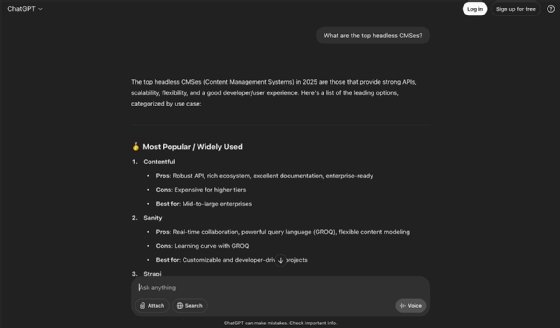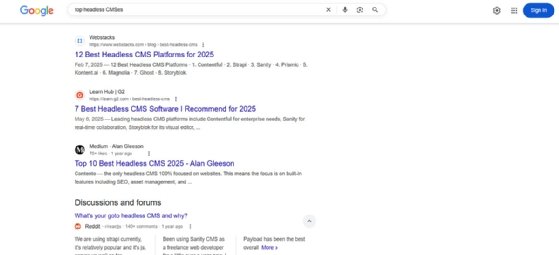
Getty Images
GEO vs. SEO: What's the difference?
GEO can increase a brand's visibility in AI search, while SEO focuses on traditional search engines. Other differences include best practices and how they generate web traffic.
As people move away from traditional search engines in favor of AI platforms, GEO becomes more important for brands.
Organizations have long relied on traditional search engines and search engine optimization (SEO) to generate website traffic. Now, modern customers increasingly prefer generative AI (GenAI) tools like ChatGPT and Google's Gemini to search the web. This shift has caused experts to question the future of SEO and has led to the development of generative engine optimization (GEO). While GEO and SEO share some similarities, they have key differences, which are their target platforms, best practices, tools and how they generate web traffic.
Explore the differences between GEO and SEO to create content strategies that incorporate best practices from both disciplines.
What is GEO?
GEO is an emerging strategy to enhance the visibility of a brand and its content on GenAI search platforms, such as OpenAI's ChatGPT, Anthropic's Claude, Google's Gemini and AI Overview, and Perplexity. Unlike traditional SEO, which marketers use to help their content rank highly in traditional search engines, GEO guides brands to create content that GenAI tools will likely feature and cite in their responses.
The practice of GEO is still in its infancy and lacks a proven track record. However, a 2024 Princeton University study offers steps to improve how large GenAI search tools evaluate a brand's content. For instance, it suggests that brands use authoritative markers in their content, such as quotes and statistics from reputable sources, to receive more citations within GenAI responses.
What is SEO?
SEO is the process of enhancing web content to boost a site's organic visibility across major search engines, such as Google and Bing. It requires organizations to improve various elements of webpages, including content quality, page speed and mobile friendliness.
Companies like Google and Bing use complex algorithms to evaluate and display the most relevant results to users' queries. SEO practitioners try to understand how these algorithms work so they can help brands create content that ranks highly on the search engine results page for relevant queries.
4 differences between GEO and SEO
GEO and SEO both help brands increase their visibility online, but they do so in different ways.
1. Target platforms
The most fundamental difference between GEO and SEO is the type of search tools they target. GEO focuses on GenAI search tools, like ChatGPT, Gemini, Perplexity, Claude and Google's AI mode. Organizations use it to improve how often -- and how favorably -- these platforms cite their brands and content in responses to user queries.

On the other hand, SEO targets traditional search engines, such as Google, Bing and Yahoo. Unlike GenAI tools, these search engines respond to user queries with a ranked list of webpage links, with the most relevant results at the top. Organizations use SEO to increase the likelihood that their web content will appear at the top of the list for specific user queries.

2. Best practices
GEO remains in its early stages, but according to the above-mentioned Princeton study, it can boost a brand's visibility in AI responses by up to 40%. Best practices include using statistics, citations and quotations from relevant sources within content.
Organizations can also add FAQ sections to their content to improve their GEO strategy. FAQs increase the chances AI will cite a webpage because they match the conversational, question-answer format that mirrors how GenAI tools process user queries and formulate responses. FAQ sections anticipate user questions, so AI tools can directly incorporate their answers in response to similar user queries.
SEO best practices overlap with those of GEO, but they aren't the same. For instance, Google's guidelines on content quality -- experience, expertise, authoritativeness and trustworthiness -- help to shape SEO best practices and encourage people to create high-quality content. Statistics, citations, quotations and FAQ sections can improve an SEO strategy, but experts haven't singled out those elements as key SEO practices as they have with GEO.
More established SEO best practices include placing keywords at the beginning of titles and summaries, using well-organized subhead structures, covering topics in-depth as opposed to skimming over them, and accruing backlinks -- links from other businesses that link back to that organization's website.
3. Tools
GEO tools are an emerging software type to help organizations receive more citations in AI responses. Common features include the ability to monitor how different GenAI tools reference a brand and its competitors, content optimization recommendations and integration with SEO tools. Examples include AthenaHQ, Goodie AI and HubSpot's AI Search Grader.
SEO tools, on the other hand, emerged decades ago and continue to evolve. They typically include keyword research capabilities, which help users find relevant terms and phrases people search for on major search engines, along with the monthly volume of those queries. They also monitor content performance on search engines and offer site audits to identify technical issues, such as broken links or nonresponsive design elements.
Examples include Ahrefs, Moz and Semrush. Some SEO platform vendors, such as Semrush, have also begun to add GEO capabilities to their list of offerings.
4. Ability to generate web traffic
GEO can help brands appear in responses on AI tools, but even the most effective strategies won't generate as much web traffic as SEO. GenAI models offer users direct answers rather than a list of webpages to visit, so many users won't visit a brand's website, even if the tool cites it as a source.
SEO, in contrast, still drives significant web traffic for many brands, even though overall traffic numbers have decreased due to competition from GenAI platforms. Due to this decrease, brands might begin to view GEO as a strategy to build brand awareness and SEO as a way to generate web traffic.
| Difference |
GEO |
SEO |
| Target platforms |
GenAI tools like ChatGPT, Claude, Perplexity and Google's AI overview |
Traditional search engines like Google, Bing and Yahoo |
| Best practices |
Use of statistics, quotes, conversational language and FAQ sections |
Keyword optimization, well-organized subhead structure, content depth and backlinks |
| Tools |
AthenaHQ, Goodie AI and Hubspot's AI Search Grader |
Ahrefs, Moz and Semrush |
| Ability to generate web traffic |
Limited direct traffic |
Drives significant direct web traffic |
FAQ
As GenAI reshapes how people search online, marketers, SEO strategists and content managers have many questions about their future work strategies.
What's the difference between GEO and SEO?
GEO helps organizations increase their brand and content visibility on GenAI search tools, such as ChatGPT and Google's AI Overview, whereas SEO helps brands rank higher on traditional search engines.
Is GEO really a thing?
Yes, GEO is an emerging strategy that organizations can use to make their brands, products and content more likely to appear in GenAI search responses. The strategy remains nascent, but Princeton University research suggests that organizations can experience a measurable increase in brand and website visibility from AI search tools if they include statistics, citations, quotes and conversational language in their content.
Is GEO more important than SEO?
No, GEO and SEO are equally important strategies that organizations can use together. SEO has become less effective due to the advent of GenAI search tools, but traditional search engines still generate far more web traffic than GenAI tools. Organizations can use GEO to maximize brand awareness on AI tools, and SEO to bring in web traffic.
Will GEO replace SEO?
No, GEO will not replace SEO in the foreseeable future because people still use traditional search engine functionality. SEO has become less effective than it once was due to GenAI tools, but it's unlikely to completely disappear.
Can GEO and SEO work together?
Yes, GEO best practices overlap with SEO and can easily fit into a brand's SEO strategy. For example, content marketers can add more quotes, citations, statistics and FAQ sections to their content while they continue to use traditional SEO best practices.
How can organizations measure GEO?
Organizations can measure GEO's effectiveness in several ways. For example, they can track how often AI tools cite the brand's content as a source, the context in which the tools reference the brand and the amount of web traffic that comes from AI platforms. Brands can conduct this research manually or invest in GEO tools to automate the process.
Tim Murphy is site editor for Informa TechTarget's SearchCustomerExperience and SearchContentManagement sites.






